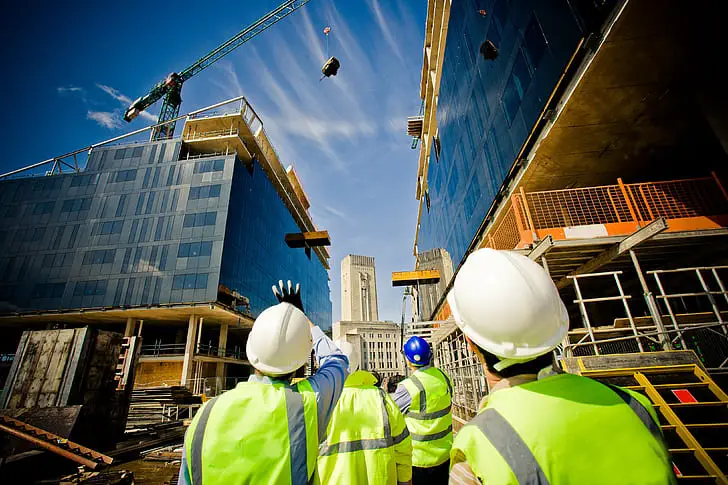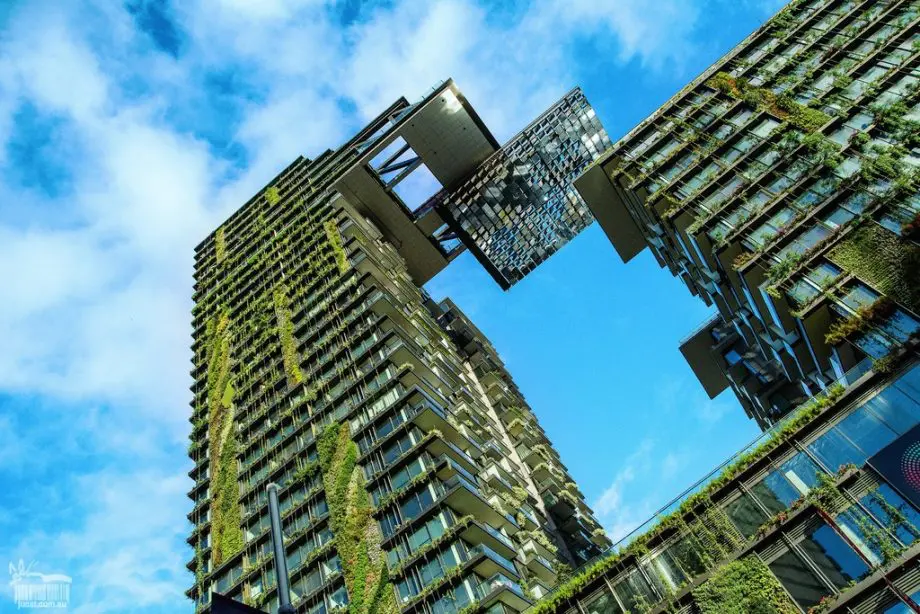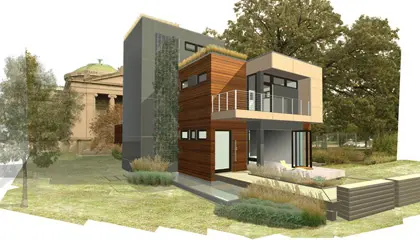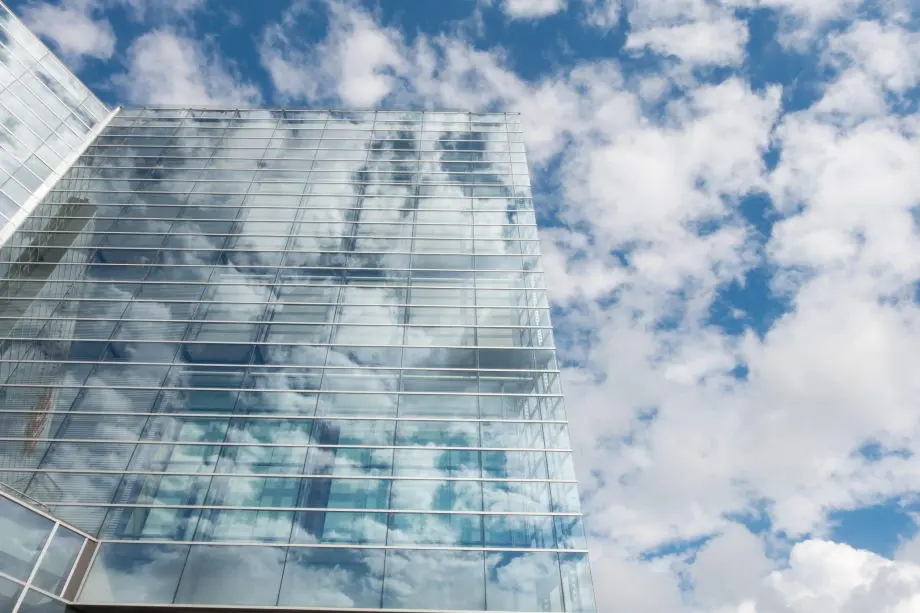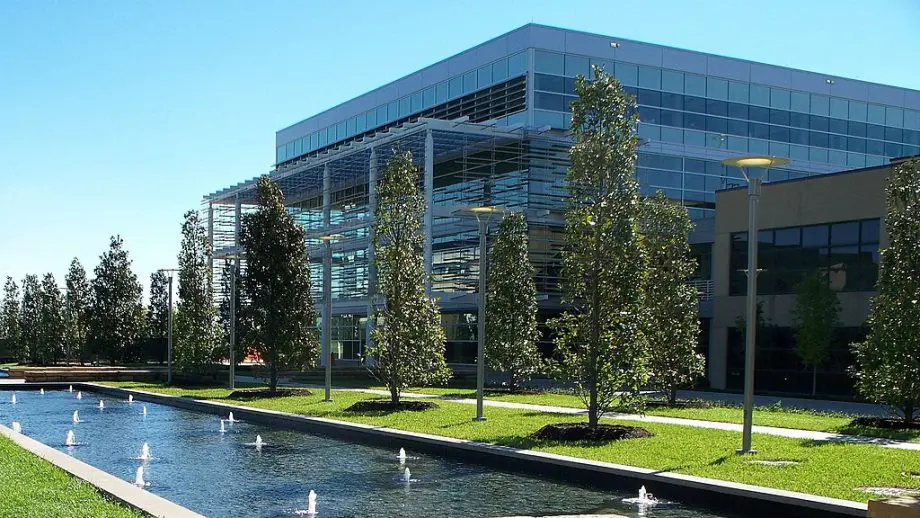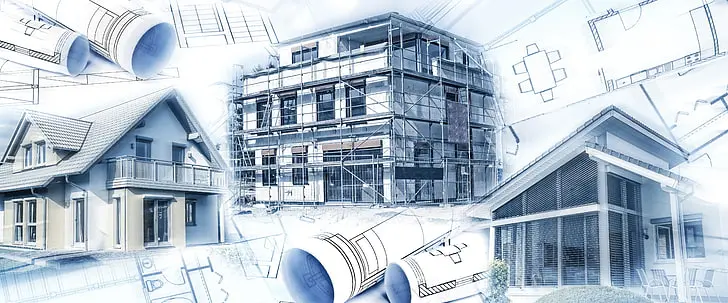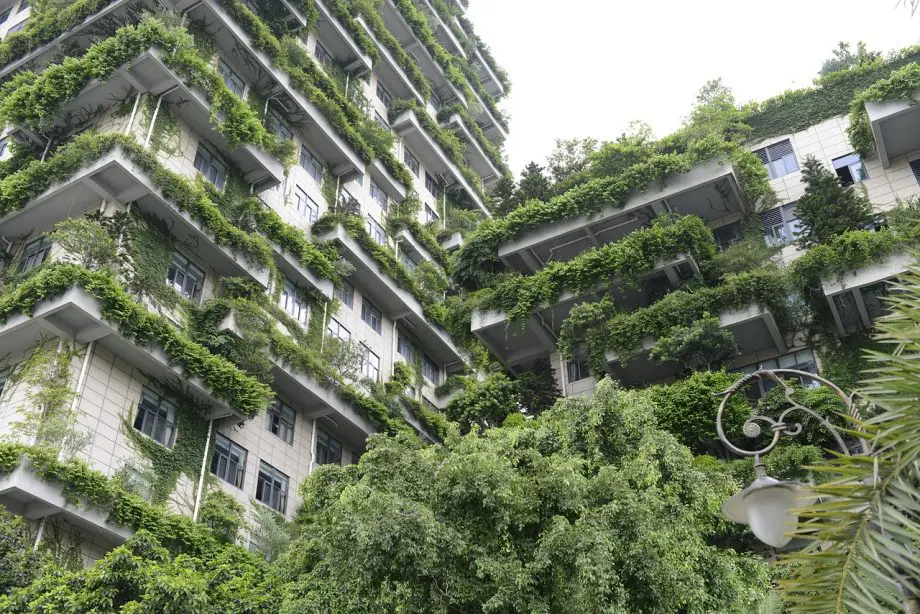
Discover the environmental benefits of green building in our latest blog post. Learn how it reduces CO2 emissions, boosts energy efficiency, and more!
Ever wondered how a building can contribute to the health of our planet? Well, it’s time to dive into the world of green building.
The environmental benefits of green buildings are not just impressive, they’re game-changing.
From reducing CO2 emissions to boosting energy efficiency, green building is transforming the way we think about construction and design.
So, let’s embark on this journey together and discover how green buildings are making our world a better place, one brick at a time.
Environmental Benefits of Green Building
Welcome to our deep dive into the fascinating world of green building.
In this post, we’re going to explore the environmental benefits of green building, a concept that’s revolutionizing the construction industry.
We’ll delve into how buildings impact our environment, the remarkable benefits of adopting green building practices, and how the market is responding to this eco-friendly approach.
We’ll also share some inspiring case studies and look at the promising future of green building.
Plus, we’ll tackle some of your most frequently asked questions. So, sit back, relax, and let’s embark on this green journey together!
Definition of Green Building
Let’s start with the basics. What exactly is a green building? Hint: It’s not just painted green.
Well, in simple terms, a green building, also known as a sustainable building, is a structure that is designed, built, renovated, operated, or reused in an ecological and resource-efficient manner.
It’s all about making a positive impact on our environment. Green buildings are designed to reduce the overall impact on human health and the natural environment.
This is achieved by efficiently using energy, water, and other resources, protecting occupant health, improving employee productivity, and reducing waste, pollution, and environmental degradation.
It’s like giving a building a green thumb!
Importance of Green Building
Now, you might be wondering, why is green building so important.
Well, the importance of green building lies in its numerous benefits, both to the environment and to us humans.
Green buildings not only help in conserving natural resources but also in creating a healthier and more productive environment for people to live and work in.
They contribute to improving air and water quality, reducing waste streams, and conserving natural resources.
But the benefits don’t stop there. Green buildings can also result in significant cost savings.
They use less energy and water, which can lead to reduced utility bills. Plus, they can increase property values and lead to higher occupancy rates.
So, green building is not just good for the environment, it’s also good for our wallets!
Let’s take a moment to consider the buildings we live and work in every day.
Have you ever thought about the impact they have on our environment? It’s easy to overlook, but the truth is, buildings play a significant role in our environmental footprint.
From the energy they consume to the waste they produce, buildings have a profound effect on our planet.
In this section, we’re going to delve into the environmental impact of buildings, shedding light on their energy use, resource consumption, and greenhouse gas emissions.
It’s an eye-opening exploration that underscores the urgent need for green building practices.
So, let’s dive in and uncover the hidden environmental cost of our built environment.
Global Energy Use by Buildings
Let’s kick things off by talking about energy. Buildings are like giant energy consumers.
They need power for lighting, heating, cooling, and running all sorts of appliances and systems.
Globally, buildings account for a significant portion of the total world energy consumption.
This energy use isn’t just about turning on lights or running air conditioners; it includes the energy used in the construction of the building and the manufacture of all the materials that go into it.
It’s a big piece of the energy pie, and that’s why green buildings, which prioritize energy efficiency, are so important.
Resource Consumption by Buildings
Next up, let’s talk about resources. Buildings, especially during their construction, consume a vast amount of resources.
This includes everything from water and raw materials to land. For instance, think about the concrete, steel, wood, and other materials used in construction.
These resources often come from non-renewable sources and their extraction and use can have significant environmental impacts.
Green buildings aim to minimize this resource consumption by using materials more efficiently and opting for sustainable, renewable materials wherever possible.
Greenhouse Gas Emissions from Buildings
Lastly, we can’t overlook the role buildings play in greenhouse gas emissions.
Buildings contribute to emissions in several ways. The most direct way is through the burning of fossil fuels for heating, cooling, and lighting.
Then there’s the energy used in the extraction, production, and transportation of building materials, which also contributes to emissions.
And let’s not forget about the waste generated during construction and demolition.
All these factors make buildings a significant contributor to greenhouse gas emissions.
This is another area where green buildings can make a big difference, by reducing energy use and promoting practices that lower emissions.
Benefits of Green Building
Now that we’ve explored the impact of traditional buildings on our environment, it’s time to turn our attention to the brighter side of the story, the benefits of green building.
This is where we get to see how smart design and innovative practices can turn the tables, transforming buildings from environmental challenges into solutions.
Green buildings bring a host of benefits, from slashing energy use to reducing waste, and they’re just as good for people as they are for the planet.
So, let’s dive into the many ways green building is making a difference and shaping a more sustainable future for us all.
1. Lower CO2 Emissions
First on our list of green building benefits is lower CO2 emissions.
Green buildings are designed to be energy efficient, which means they require less energy to operate.
Less energy use translates into fewer carbon emissions. Plus, many green buildings use renewable energy sources, like solar or wind power, which produce no carbon dioxide emissions at all.
These new buildings are a win-win situation for the environment and for our fight against climate change and global warming by lowering our carbon footprint.
2. Energy Efficiency
Energy efficiency is at the heart of green building. These buildings are designed to make the most of every bit of energy they use.
They might have high-quality insulation to reduce the need for heating and cooling, energy-efficient lighting to reduce electricity use, or smart design features that maximize natural light and ventilation.
The result is a building that does more with less, saving energy and reducing environmental impact.
3. Water Efficiency
Water conservation is another critical area where green buildings shine.
These buildings use innovative strategies to reduce water use, like low-flow fixtures, rainwater harvesting systems, and water-efficient landscaping.
Some green buildings even treat and reuse greywater. It’s all about making the most of every drop and reducing the strain on our precious water resources.
4. Waste Reduction
Green buildings also excel when it comes to waste reduction.
During construction, green building practices aim to minimize waste and promote recycling.
Once the building is in use, features like recycling facilities and composting programs can help reduce the waste that occupants produce.
Plus, by extending the life of buildings and reducing the need for new construction, green building also helps to reduce waste in the broader construction industry.
5. Use of Natural Resources
Finally, green buildings are all about using natural resources wisely. This starts with the choice of building materials.
Green buildings often use materials that are sustainably sourced, recycled, or low-impact.
They also consider the full life cycle of the building, aiming to minimize the resources needed for maintenance and eventual decommissioning.
And by creating healthier, more comfortable spaces, green buildings also contribute to a very important natural resource: human well-being.
The Market Response to Green Building
As we’ve seen, green building brings a host of environmental benefits.
But how is the market responding to this sustainable approach to construction?
Are businesses, homeowners, and developers getting on board with green building?
The answer is a resounding yes! In this section, we’re going to explore the market response to green building.
We’ll look at the growth of the green building sector, the profitability and value increase of green properties, and how this trend is shaping the future of the construction industry.
So, let’s dive in and see how going green is becoming not just an environmental choice, but a smart business move too.
Growth of the Green Building Sector

Let’s start by looking at the growth of the green building sector. Over the past few years, we’ve seen a significant increase in the number of green buildings around the world.
This isn’t just happening in a few niche markets or progressive cities. It’s a global trend, with green buildings popping up everywhere from urban centers to rural communities.
This growth is being driven by a combination of factors, including increasing awareness of environmental issues, government incentives, and the proven benefits of green building.
It’s clear that the green building sector is not just growing, it’s thriving.
Profitability and Value Increase of Green Properties
Now, let’s talk about the bottom line. One of the most compelling market responses to green building is the profitability and value increase of green properties.
Green buildings often command higher rents and sale prices than their conventional counterparts.
This is due to a variety of factors, including lower operating costs, higher occupant satisfaction, and the prestige associated with green certification.
Plus, as more and more people recognize the benefits of green building, the demand for these properties is only going to increase.
So, investing in green building isn’t just good for the planet, it’s also good for your wallet.
Case Studies of Green Building Projects
Nothing brings the benefits of green building to life quite like real-world examples.
That’s why we’re going to take a closer look at some case studies of green building projects.
These are buildings that are walking the walk, demonstrating what’s possible when we prioritize sustainability in our built environment.
From LEED-certified buildings that set the standard for green design to green retrofit projects that transform existing buildings, these case studies are a testament to the power and potential of green building.
So, let’s dive in and see what green building looks like in action!
LEED-Certified Buildings
First up, let’s talk about LEED-certified buildings. LEED, or Leadership in Energy and Environmental Design, is a globally recognized green building certification system from the U.S. Green Building Council and is used in the United States.
It provides a framework for healthy, highly efficient, and cost-saving green buildings.
LEED-certified buildings are a shining example of green building in action.
They meet strict criteria for energy efficiency, water use, indoor air quality, and more.
Plus, they’re designed to provide a healthy and comfortable environment for the people who use them.
From office buildings to schools to homes, LEED-certified buildings are showing the world what green building can achieve.
Bank of America Tower in New York City
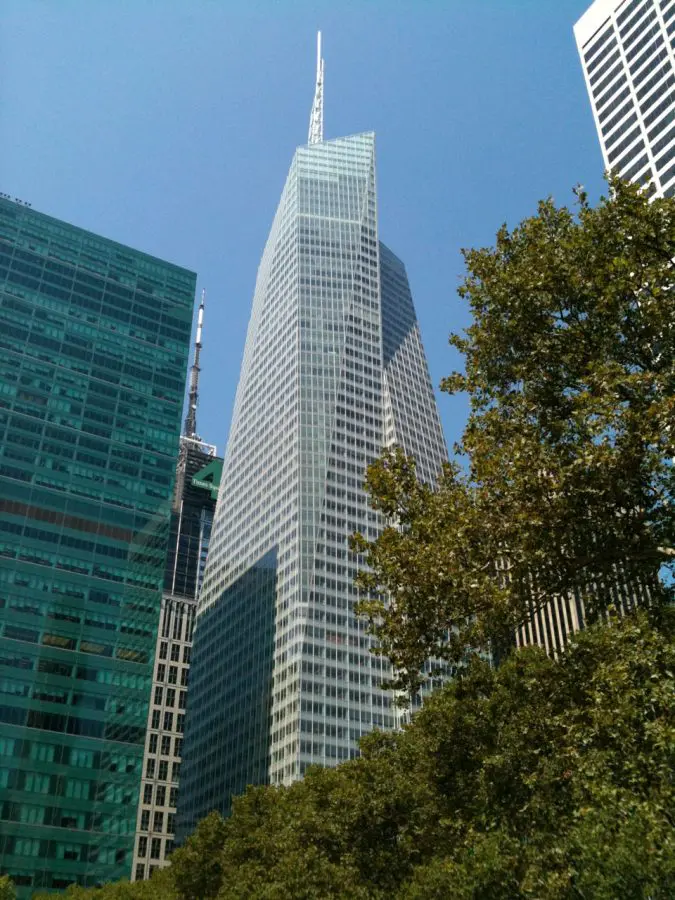
One shining example of a LEED-certified building is the Bank of America Tower in New York City.
This skyscraper was designed with a host of green features, including floor-to-ceiling insulated glazing to contain heat and maximize natural light, and an automatic daylight dimming system.
The tower also has a greywater system, which captures rainwater for reuse.
Bank of America Tower is one of the most ecologically friendly buildings in the world, having achieved a LEED Platinum, the highest rating possible.
Green Retrofit Projects
Next, let’s look at green retrofit projects. These are projects that take existing buildings and upgrade them to meet green building standards.
Green retrofitting can involve everything from installing energy-efficient lighting and HVAC systems to improving insulation to adding renewable energy sources like solar panels.
These projects are a crucial part of the green building movement because they recognize that we can’t just focus on new construction.
We also need to improve the buildings we already have. By reducing the environmental impact of existing buildings, green retrofit projects are helping to drive the green building movement forward.
Empire State Building in New York City
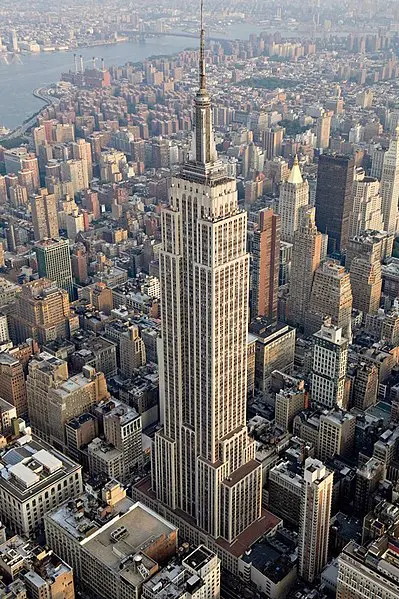
A great example of a green retrofit project is the Empire State Building in New York City.
In 2009, a massive retrofit project was undertaken to improve the building’s energy efficiency.
The project included refurbishing all 6,514 windows, upgrading the building’s insulation, and installing smart building systems to optimize energy use.
The result was a 38% reduction in energy consumption, proving that even the most iconic and historic buildings can benefit from green retrofitting.
Future of Green Building
As we look to the future, it’s clear that green building will play a pivotal role in shaping our built environment.
But what exactly does the future hold for green building? In this section, we’re going to explore the trends and innovations that are set to drive the green building movement forward.
From new technologies to evolving building standards, we’ll delve into the exciting developments that are on the horizon.
So, let’s take a glimpse into the future of green building and see how it’s set to continue transforming our world for the better.
Predicted Growth and Impact
When we look to the future of green building, one thing is clear: it’s set to grow.
As awareness of environmental issues continues to rise, and as more people recognize the benefits of green building, demand for these buildings is expected to increase.
This growth will be driven not just by residential buildings, but also by commercial and public buildings.
Schools, hospitals, office buildings – they’re all part of the green building future.
But the impact of this growth will extend beyond the number of green buildings.
As green building practices become more widespread, they’ll drive innovation in the construction industry, leading to new materials, technologies, and sustainable design practices.
They’ll also help to reduce the environmental impact of the built environment, contributing to efforts to combat climate change.
And let’s not forget the social impact. Green buildings create healthier, more comfortable spaces for people to live and work in.
As green building becomes the norm, these benefits will be felt by more and more people.
In short, the future of green building is bright. It’s a future of growth, innovation, and positive impact. And it’s a future we can all look forward to.
Advantages of Green Building FAQs

We’ve covered a lot of ground in our exploration of green building, but you might still have a few questions. That’s why we’ve included this FAQ section. Here, we’ll tackle some of the most common questions people have about green building. From the economic benefits of sustainable building to the impact of green roofs on heat islands, we’ll provide clear, concise answers to help you deepen your understanding. So, let’s get those burning questions answered and delve into the FAQs!
Q. What are the economic benefits of green or sustainable building?
A. Green or sustainable buildings are not only good for the environment, but they’re also good for the wallet. They typically have lower operating costs due to energy and water efficiency, which can lead to significant savings over time. Additionally, they often have higher property values and can command higher rents or sale prices. There’s also the potential for increased occupant productivity and health, which can translate into economic benefits for businesses and individuals.
Q. How does green building help reduce carbon, water, energy, and waste?
A. Green buildings are designed with efficiency and sustainability in mind. They often incorporate features like energy-efficient appliances and systems, insulation, and renewable energy sources, which help to reduce carbon emissions and energy use. Water-efficient fixtures and landscaping, as well as rainwater harvesting systems, can significantly reduce water use. Green buildings also aim to reduce waste through efficient construction methods and by promoting recycling and composting.
Q. What is the impact of green roofs on heat islands?
A. Green roofs, which are covered with vegetation, can help mitigate the heat island effect, a phenomenon where urban areas are significantly warmer than their rural surroundings. They do this by absorbing heat and acting as insulators for buildings, reducing the need for air conditioning and thereby energy use. Green roofs also help to reduce stormwater runoff and provide habitats for wildlife, contributing to biodiversity.
Q. How does green energy contribute to the environment?
A. Green energy, or renewable energy, plays a crucial role in reducing our reliance on fossil fuels and decreasing greenhouse gas emissions. By harnessing natural resources like wind, solar, and geothermal energy, we can generate electricity without producing harmful pollutants. This helps to mitigate climate change, improve air quality, and preserve natural resources for future generations.
Benefits of Environmental Efficiency Conclusion
As we wrap up our exploration of green building, it’s clear that this is more than just a trend. It’s a powerful approach to construction that’s making our buildings more sustainable, our environment healthier, and our future brighter. In this conclusion, we’ll recap the key points we’ve covered and share some final thoughts on the environmental benefits of green building. So, let’s take a moment to reflect on what we’ve learned and consider how we can all play a part in this green building revolution.
Recap of Environmental Benefits
We’ve covered a lot of ground in this post. We started by defining what green building is and why it’s so important. We then delved into the environmental impact of traditional buildings, looking at their energy use, resource consumption, and greenhouse gas emissions. From there, we explored the many benefits of green building, from lower CO2 emissions to efficient use of natural resources. We also looked at how the market is responding to green building and examined some inspiring case studies. Finally, we peered into the future of green building and answered some of your most frequently asked questions.
Environmental Benefits of Green Building Final Thoughts
As we conclude, it’s clear that green building is not just a trend, but a necessity for our future. The environmental benefits of green building are significant and far-reaching, impacting not just our environment, but our health, our economy, and our quality of life. As we move forward, it’s crucial that we continue to embrace and promote green building practices. Whether you’re a homeowner, a business owner, a developer, or simply someone who cares about our planet, we all have a role to play in this green building revolution. So, let’s continue to learn, innovate, and build a more sustainable future, one building at a time.

